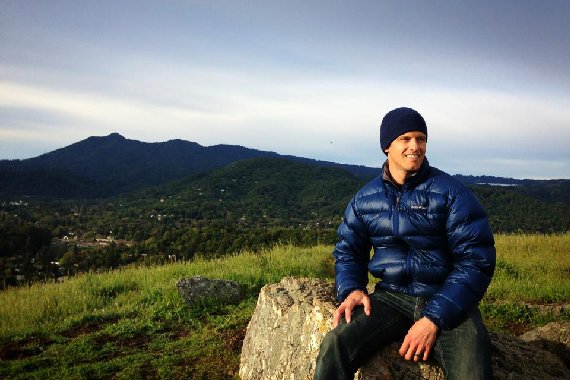Having literally spent over 3 years of his life on the face of El Capitan, with numerous speed records to boot —big wall climber, ex-wingsuit BASE jumper, and founder of SuperTopo and OutdoorGearLab— Chris McNamara has a trove of wisdom that each of us can learn from.
In this Climber Spotlight, hear about the aid climbing adventures of the 90s, how his relationship with both climbing and BASE has evolved over the years, and a few stories that will have you pondering some important life questions:
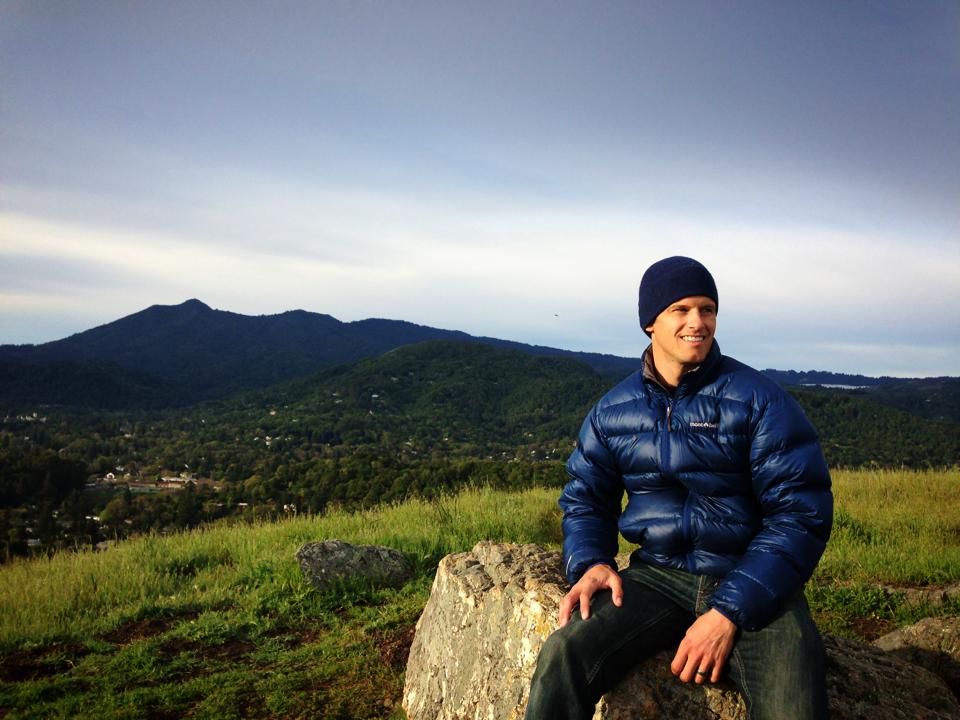
Age: 37
Years climbing: 23
Type of climber: big wall
Occupation: publishing and real estate entrepreneur
Current town: Zephyr Cove, NV
You were really involved in the Yosemite climbing scene in the 90s. What was the Valley like during that time? How has it changed?
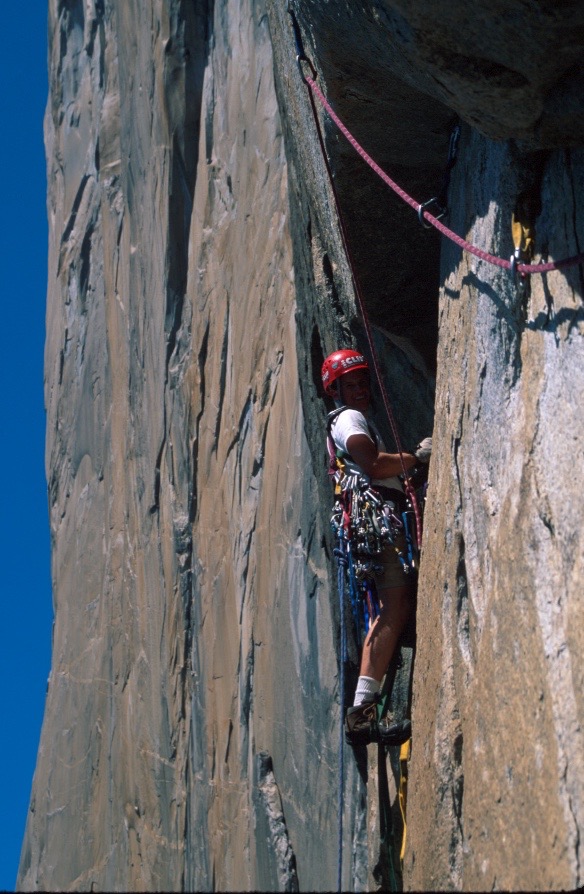
Midway through the first ascent of the Girdle Traverse on El Capitan. Photo: Mark Melvin
In the 90s aid climbing was still cool—now you have to free climb El Cap to get respect. It was all about doing the hard aid routes and climbing fast and clean. With no social media, the Lodge parking lot and El Cap Meadow were our Facebook. Now the whole world can know what you’re doing while you’re doing it, which overall I think is more fun and drives performance.
Plot the number El Cap free ascents against the adoption of social media and I think they would show similar exponential curves over the last decade. It’s cool to see the big wall free standards rise so fast and actually watch Tommy Caldwell work out the Dawn Wall crux in real time. But in the 90s, there was much more mystery around the people pushing the limits, which was also pretty cool.
Related: What Nobody is Saying About the Dawn Wall
In addition to being a talented climber, you were also an avid BASE jumper for many years. How did you get into BASE jumping? What was the most alluring part of the sport in the beginning?
I was about to get into BASE with Dan Osman and crew. But after his death, rope jumping (which was going to be our gateway drug to BASE) went into hibernation (rope jumping returned a decade later in Moab). Then Frank Gambale, who was going to teach us, jumped over me while I was climbing Excalibur on El Cap, was chased into the Merced by Rangers, and then drowned. That gave me pause.
Years later a girlfriend found someone to throw us off the Power Tower in the Central Valley with no sky dive experience.. It was fun in that
Hey y’all, watch this!
redneck sorta way. But it didn’t grab me.
Then I watched a movie called SuperTerminal about Norwegians flying their bodies through insane terrain with wingsuits and homemade tracking suits. That was the coolest thing I’d ever seen.
Suddenly the sport was not about falling … it was about flying. I had to do it. I dropped everything and dedicated two years of my life to wingsuit BASE jumping around the world.
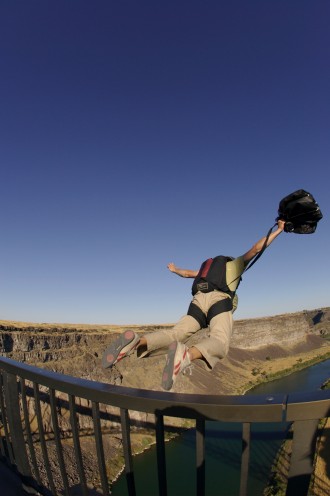
Making my 2nd BASE jump ever (still no sky dives) off the Perrine Bridge in Idaho above the Snake River. Photo: Corey Rich
Not only was wingsuit BASE jumping the greatest feeling in the world—it was (and still is) the Golden Age of the sport.
It was like showing up as a climber in Yosemite in 1950 when El Cap and Half Dome had never been climbed. Only this time most of the exits in Yosemite had not been flown with a wingsuit and most of the cliffs had not been jumped at all. It was a moment of endless possibility.
Related: Climbing Destination Guide: Yosemite Valley, CA
You eventually decided to quit BASE jumping. What caused you to make this decision? How did you know that it was time to stop?
At first I thought wingsuits made BASE jumping safer. There were so few people doing it that it seemed that few people died. Well, as we all know now, that’s false. Wingsuit BASE is almost certainly the most deadly sport in the world. I watched more and more friends die. Then I almost died twice while making the first wingsuit BASE jump into the Grand Canyon.
Right around then Shane McConkey died. He was someone I thought had cracked the code on doing the sport safely (and he made jokes about ME not being the safest jumper). Also, the sport just didn’t feel as cool as it once did. It felt more and more like a drug habit. I had to increase the dose or danger level to get back to that first exciting feeling.
Related: Solo BASE | Merging free-soloing and BASE Jumping
Tell us about your last BASE jump. Was it sad knowing that it would be your last? Was there a sense of relief?
I’d figured out how to do arguably the “biggest first” in the U.S.: the first wingsuit jump into the Grand Canyon. Figuring out how to do it was a great adventure, and a lot of fun and hard work. But standing at the edge, I knew I was fading from the sport, and I sort of just wanted to have it over with. On the jump I almost hit the ground in full flight, and then I almost drowned on landing. That was it. If nabbing a “first” that big wasn’t that meaningful—and almost killed me, twice—what else could the sport give me?
Do you miss BASE? Is it something you find yourself craving, daydreaming about or having to hold yourself back from?
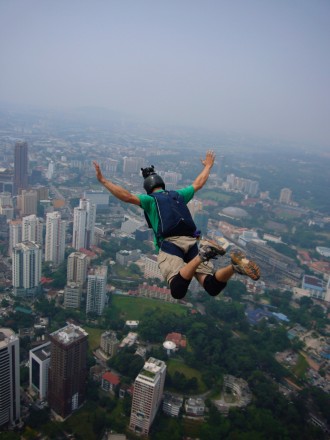
Jumping off the 1200 foot KL tower in Kuala Lumpur during a legal base event. Photo: Steve McNamara
I briefly considered getting back into BASE. It appeared that the new big suits gave you much more control and performance. I was inspired by my friend Sean Leary, who was nabbing new exits (for a jumper that’s like a climber’s first ascent) all around the U.S. I thought he had cracked the code on jumping safely. He had an extra suit he was going to loan me so I could jump out of a plane a few times and re-assess. He then died a few weeks later BASE jumping in Zion.
That made me realize that few people, if anyone, can do the sport safely. For me, BASE is not worth dying for. There are too many other adventures in life—most of which I don’t even know about yet. I want to live for those. It’s unlikely any of them will look quite as good on YouTube as BASE, but so far those new adventures have delivered a deeper and richer happiness.
Tell us about one of the proudest moments of your climbing/BASE career.
Climbing, I was psyched to take up my brother on El Cap when I was 16 and he was 13. He didn’t even know how to climb, but I taught him how to jug in our backyard tree and then I back-cleaned massively to make the jugging more direct. So much so that he took some awesome swings that terrified me but he seemed just fine with. He’s got a head for El Cap. He’s climbed it three times and Half Dome once, making him likely one of the most accomplished non-big wall climbers in the world.
Related: 10 Common Mistakes New Big Wall Climbers Make
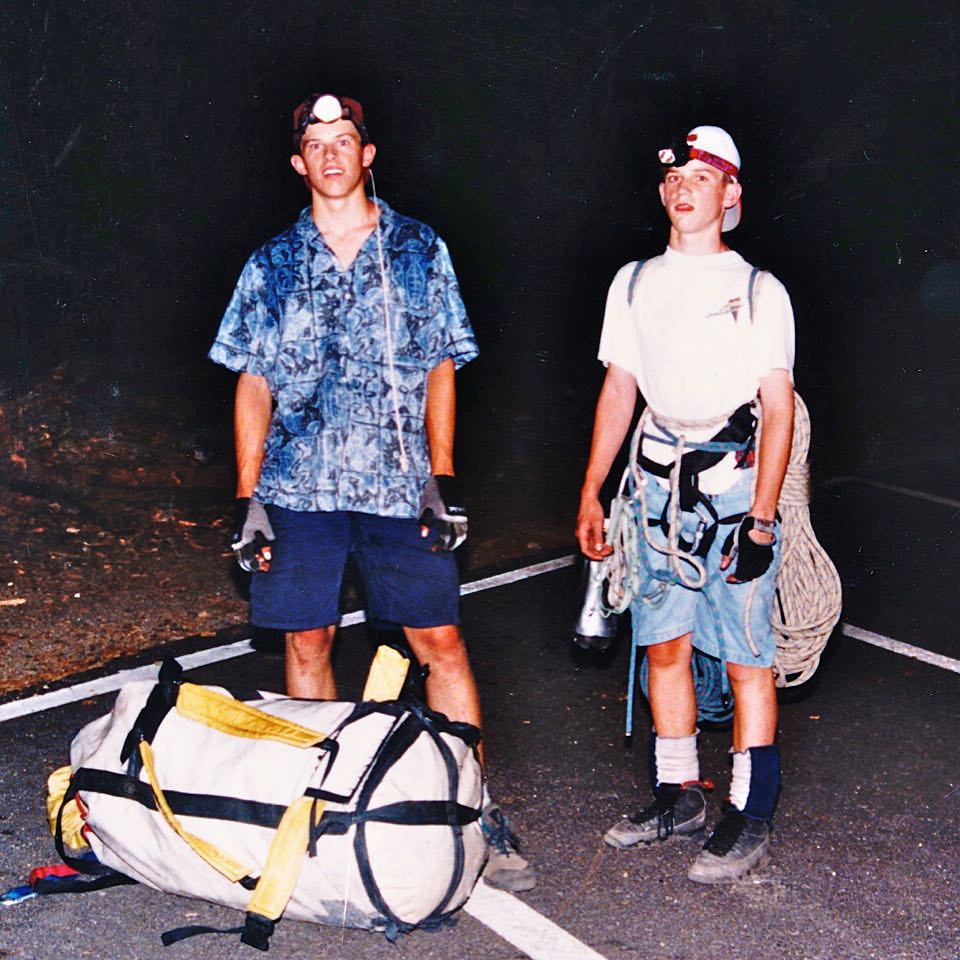
My brother Morgan and me after climbing Zodiac, El Capitan (ages 16 and 13). Photo: Steve McNamara
The other great part of that climb was that my parents were in El Cap Meadow watching the whole time, terrified, in lawn chairs. It was just like middle school parents on the sidelines of a soccer game, but different.
Doing the first Girdle Traverse on El Cap with Mark Melvin, one of my climbing mentors and business mentors, was definitely my favorite FA. It’s a 75-pitch route that I think covers 2.5 miles of climbing, rappelling and swinging.
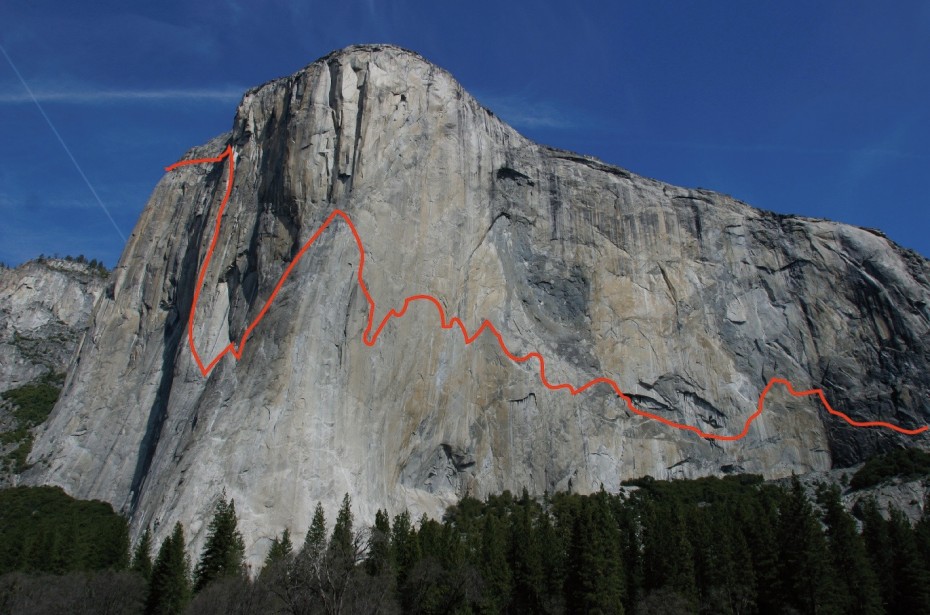
The 75-pitch, Girdle Traverse on El Capitan.
For BASE, there were a lot of new exits I did in the U.S. solo. Those were pretty powerful. There’s nothing quite like jumping off something that nobody has ever done, alone. Then landing, alone, and having hours to yourself to take it all in. I can’t imagine anything more intense than that.
Tell us about a not-so-proud moment in your climbing/BASE career.
In Baffin I jumped with someone who died. That became the beginning of the end of BASE jumping for me. It was a very heads-up jump at the time. I’d found the exit the previous day jumping solo. I’ll always wish I had just kept it to myself and not gone back with others.
Related: When (Not) to Jump—An Interview with Steph Davis
What is one piece of gear that impacted your climbing style, efficiency, or comfort level?

Midway through the first ascent of the Girdle Traverse on El Capitan. Photo: Mark Melvin
Easy: aliens. Those cams made by CCH changed everything in big wall climbing. Finally, after 15 years, all the other manufacturers are matching and improving the design. But for a long time, Aliens were the only cam in the smaller sizes you carried on walls. They made clean climbing so so much more safe and secure.
If you could give one piece of advice to a beginner climber, what would it be?
Find a badass mentor. I got to advance years, maybe even a decade, by meeting Mark Melvin early in my climbing career. He took me up El Cap when I was 15 after I had only been climbing for six months—almost exclusively in a gym. I became addicted to El Cap and my life’s course was set. Every other major positive direction in BASE, climbing, and business has been accompanied by super-talented mentors who were also just great people. I’ve found that when you surround yourself with great people in life, everything else generally takes care of itself.
What are your goals/projects for 2016?
Adventure goals:
I’m going to climb El Cap with a rack and haul bag that weigh half of what my rack did in the 90s. This is thanks to new gear, especially the carbon fiber portaledge. I’d like to document it and show people how they can climb El Cap faster and cleaner while having more fun.
Non-adventure goals
One reason I quit BASE is that it was mostly a selfish sport. I’ve become much more interested in building community. I think it’s a better road to happiness. I want my home base, South Lake Tahoe, to become the best mountain community it can be. I’ve been meeting more people who feel the same way and it’s exciting to collaborate on something a lot bigger than myself.
For example, there is potential for a single track trail that could go all the way around the lake. There are more and more mountain adventure events that bring people together (sometimes while wearing ridiculous costumes). And I’m trying to bring more cool jobs to the area, which from everything I’ve read by Ed Glaeser and Tony Hsieh, is key to building enduring communities. I’m hoping to create 5-10 [jobs] this year and we’ll see where that leads.
Anything else you’d like to tell us?
Stop on by if you are ever in South Lake Tahoe (right now at 1048 Ski Run and at the end of the year 1111 Ski Run). We have free OutdoorGearLab stickers, free SuperTopo 2nds books and maybe even a free beer!
A huge thank you to Chris for taking the time to share his insight and advice with us when it comes to climbing and life! We wish you the best of luck in all of your adventure and business endeavors!
Want more climbing content? Get our awesome climbing newsletter, delivered weekly.
Explore more
- Climber Spotlight: Tim Emmett
- Climber Spotlight: Jon Cardwell
- Top 25 Books for Rock Climbers
- Our 30+ most popular articles ever
- Solo BASE | Merging Free-Soloing and BASE Jumping
- Free Rock Climbing eBooks on Technique, Knots, Training, and More
- 23 Best Gifts for Rock Climbers
- This Week’s Best Rock Climbing Gear Sales

